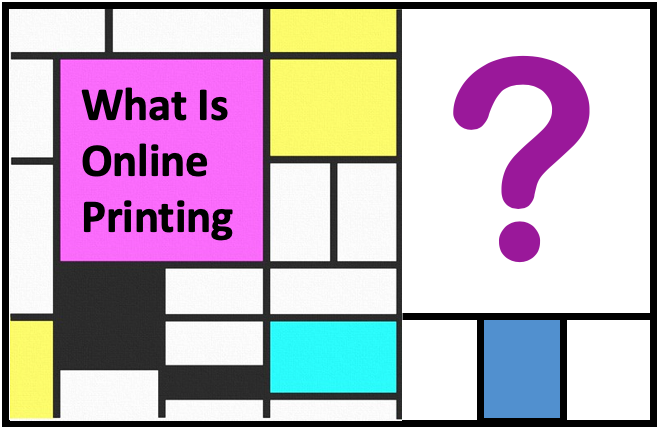One of the fastest growing markets in commercial print is online printing. It rather describes a process than a type of printing company or print application, but yet we tend to know what is meant with the term: a printing company that conducts the majority of their transactions (quoting, payments. templates, file transfer,…) via a web interface. Zipcon consulting estimates that online printing in Germany, Switzerland and Austria accounts for €7,5 billion (US$ 8.3bn) in revenue, which would represent more than 20% of the total printing revenue in these countries. Accordingly, one would expect that lots of the latest inkjet equipment can be found in these types of companies.
However, the uptake of inkjet print is still in its infancy among online printers so far. Pretty much the same can be said about all digital print. There is the notable exception of photo printing, which is almost always done in the run length of one and hence requires digital print. Yet, photo and photo merchandise printers do mostly rely on electrophotographic technology and seldom on inkjet. Outside of photo print digital can be called a nascent technology and this is even more true for inkjet.
This contrasts with the success inkjet print had in other markets for short run printing – although short run printing is the mainstay of online printers.
Efficient in offset
Most online printer base their success on low prices. This is partially based on a streamlined ordering process, but also on very efficient printing and finishing operations. The fierce competition among online printers is even putting more pressure on lowering the production costs. This has led to very efficient press set-ups using large format offset presses and job ganging. By using modern offset presses with the latest improvements in plate change, automated job setup and advanced colour control these offset presses are suitable for work in run lengths of a few hundred sheets.
While many sites have at least some digital print capabilities, these are typically toner based. Partially this is down to a lack of choice in production inkjet presses, especially for cut-sheet markets. Continuous feed inkjet printers have not been able to fill the gap. The biggest drawback of continuous feed is the lack of fast paper change options. Usually this is something important for commercial printers serving a multitude of customers with a multitude of print applications. That drawback should be less severe for online printers, as they deliberately limit the range of papers they print on to streamline their operations. Still paper choice and logistics is holding back online printers from investing into CF inkjet printers and few made their way into the online print market so far.
Another challenge for inkjet presses is that production costs depend a lot on page coverage, as ink is a separately billed consumable. However, coverage dependent quoting is difficult to do in online print environments, where quick quoting on list prices is required. This is why B2 electrophotographic presses, namely the HP Indigo 10000 and 12000 made some inroads into online print. Top user in Europe is Cimpress ordering 20 units in 2016. There are several other online printers having single or multiple units. While this adds up to a considerable fleet of digital presses in online print, it still pales compared to the offset capacity.
Inkjet in Online print today
There are a few cases in which inkjet printing has made inroads into online print.
The Bluetree group operates two CF Screen inkjet presses for bound books. Here the collating aspect is pushing up the break-even as the presses produce books in perfect page order without having to put signatures on a collator.
The Bluetree group has been active with other inkjet presses as well. Recently the company added a Landa S10P, with the press moving into production now – the first commercial print Landa press installed in Europe. This will push up the break-even for commercial products for digital compared to the B1 offset presses in use. Another inkjet press, the Fujifilm JetPress 720S, is in use as well, but focussed on business cards due to the high print quality.
There are some B2 inkjet presses in use at dedicated online printers from Fujifilm or Konica Minolta/Komori. PLS in Germany and realisaprint.com in France use a Konica Minolta KM-1, while Bulckens in Belgium has the IS-29 sold by Komori – all printing general commercial jobs. Poster XXL, Cewe and Instantprint have the Fujifilm JetPress, but usually more for speciality applications
Moving forward
There is no doubt that inkjet usage will increase in volume for online print companies. The very nature of online print is requiring short runs and quick turnaround solutions. Quality is barely a problem for a bigger adoption of digital any more – but the break-even against offset is, given the highly efficient workflows online printers have. A lot of the cost burden is down to consumables, although a lower productivity also plays a role. Inkjet has the best potential in driving the break-even up, but as any ink chemist will confirm: this is tough block to chip away. Progress will be incremental when comparing pure print cost against offset.
Another factor might have even more potential: automation. This does not only aim at reducing labour costs and avoiding waste, automation is required to combat the shortage of skilled workers in the printing industry.
Finally, there is limited choice in cut-sheet inkjet solutions with commercial print quality currently. The Landa S10P might be right choice for some. There will be a few more installations this year, but not every site will be able to afford or fit this press. More choice (and lower investment costs) in devices will be welcome to enlarge the appeal of inkjet. Drupa 2020 will see the launch of more cut-sheet inkjet presses, although it usually takes some time until they will be ready for the production floor.

